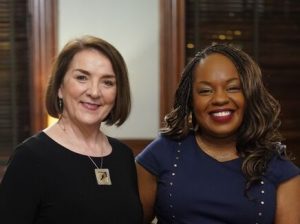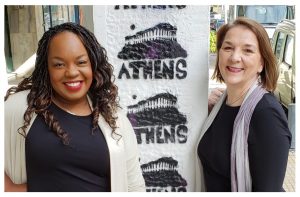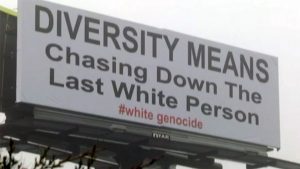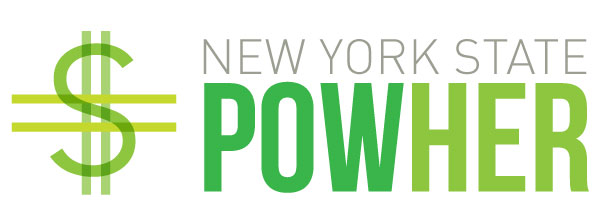Genuine Change Requires Genuine Self-Examination, Strategies, and Transparency
Help!
During the past week my partner, Paula T. Edgar and I have received at least two dozen requests for help from potential clients. These requests have varied in terms of the specific type of help that they were seeking, but mostly people wanted help drafting their “Black Lives Matter” statements. Several people reached out asking if they could “pick our brains” (aka get free consulting), but that is the subject of another blog post. We have provided several of our clients with feedback on their statements, which is totally appropriate as Diversity, Equity, and Inclusion (DEI) consultants. These statements should be personal and reflect an organization’s culture and history. (Please see Paula’s blog post “Say Something. Organizations Cannot Be Silent About Black Lives.” ) In other words, if you want to make a statement about an emotionally and politically charged issue, it really needs to be genuine. Here, as an example, is the statement that Paula and I released on “Black Lives Matter” last week.
We get frequent requests from potential clients interested in diversity, equity, and inclusion work that fall in the ‘window dressing’ (not really genuine) category. Some examples:
“We don’t have the resources to do a whole DEI assessment or strategic plan. Can you just give us a checklist of dos and don’ts?”
“We have had several ‘issues’ lately. Can you do a 45-minute webinar on unconscious bias?”
There are many more examples that I could share, but you get the idea. Racism, bias, inequity, and exclusion have dominated human interaction for millennia and yet people expect this to be effectively addressed by a single 45-minute ‘diversity workshop’ or an email from the CEO expressing their commitment to being inclusive. These ‘strategies’ give meaningful diversity and inclusion efforts a bad name.
The Walls Are Porous
The walls are porous. I have been saying this for a very long time. What I mean is that what happens out in the world impacts people inside of the walls of the office or hospital or restaurant where they work. Whether employees are comfortable discussing the Black Lives Matter protests or not, does not mean that they have not been impacted by racism and violence against Black people. The devastation resulting from the Coronavirus on a global scale has made this point painfully clear as many people are doing their jobs while being out in the world. The new workplace walls might be one’s bedroom or closet or kitchen walls. WFH (working from home) is what many ‘non-essential’ employees have been doing for the past few months. It is impossible for any organization regardless of function or size, to avoid being impacted by this pandemic. There have been hundreds of articles providing advice on working and managing from home. (I wrote a blog and presented a webinar on this in March: “10 Inclusive Management Best Practices for Remote Teams” ) The challenge of navigating the Coronavirus and its impact on the workplace was greatly compounded on May 25th.
On May 25th, the video of George Floyd being murdered by Police Officer Derek Chauvin ‘went viral’ and the traumatic impact was immediate. I have conducted thousands of investigations of allegations of discrimination in my career. It is exceedingly rare that ‘smoking gun’ evidence exists. The almost 9-minute video (which is extremely difficult to watch) is more than a smoking gun. In response, protests calling for justice and asserting that Black Lives Matter have been happening in cities and small towns from the United States to New Zealand and include people of all races, ages, genders, and religions. The protests have been inclusive and effective. Elected and appointed officials across the country are scrambling to write and pass legislation that creates accountability and transparency for law enforcement agencies and protects people from hate crimes. As with the Black Lives Matter’s protests in 2014 and 2016 White people have marched alongside Black people to call for justice. Unlike in 2014 and 2016, however organizations have had to acknowledge the impact of these events on their employees and customers and figure out if, and how to address and share their position on Black Lives Matter.
In the midst of the complicated process of trying to bring staff back to work safely (as more and more states ‘open up’ during the current recession of Coronavirus cases), leaders also have to assess the impact of institutional and systemic racism on their organizations.
The walls between the members of your organization and recent events have virtually disappeared. People are streaming life; and personal-life and work-life are now blended. So, the porosity of walls – when external issues seep into and impact an enclosed space (office) – has become more complicated for organizations to manage.
In every organization, employees have been disparately impacted by the Coronavirus. Black and Brown people have been disproportionately impacted by the Coronavirus in terms of infections and deaths. Some employees have had family members die because of the virus, some employees have had the virus and are struggling to fully recover and deal with its long-term impact on their lives. Others are primary care givers of a family member with the virus or must cope with their kids not going to school or summer camp. People are being bombarded by a tremendous amount of negative news and images. All the above is impacting our ability to sleep, eat properly, relax, renew, and refuel. We are asked: “How can you expect organizations to manage DEI during all of this?” My response: how can you not? DEI impacts everything that is happening now. So, now is the time to mindfully address your organization’s DEI issues.
Do The Work
Inclusion takes work. Equity requires an investment of time, money, and other resources. Inclusion doesn’t happen organically. No one wants to hear that. Potential clients sometimes think that when we recommend a thorough, multi-leveled and strategic approach to DEI that we are simply trying to sell them more services. We are not. We are being genuine with you and we know what works
Paula and I try to explain that a coordinated and sustained effort is required to achieve healthy organizational change, especially if the organization has a demonstrated history of racism or other forms of discrimination. Employees need tangible evidence that leadership is serious in words and deeds about creating inclusion.
If your organization has not done anything in the DEI sphere, say so, along with sharing your commitment to change. If your organization has had false starts in terms of your DEI efforts, say so, while sharing how you have learned from those failed efforts. If your organization has done some genuine DEI work and realizes that the elusive goal of being an inclusive organization requires ongoing work, say so, while mapping out how you intend to continue doing this vital work! Expect that those who are reading your “Black Lives Matter” statement can read between the lines and determine how genuine you are based on what you do and do not say. Members of your organization know what you have and haven’t done in the past and so, if you distort that history, they will know that you are not being genuine or transparent.
Be Strategic
I have been writing and talking about the importance of (DEI) being part of an organization’s strategic planning process for years. We do not recommend that you invest in a strategic planning process and then, three months later stitch on a DEI patch. That “patch” will inevitably fall off after minimal wear. DEI needs to be woven into your strategic planning process – from the beginning. All stakeholders need to be part of the process – from the beginning. Organizations need to be prepared to implement the strategies that they commit to and establish a budget and other resources for that purpose. The plan needs to be communicated to all staff and key stakeholders along with an invitation for their participation and feedback. Too often, executive teams craft DEI statements and plans in a vacuum without inviting the input of those most deeply impacted by the outcomes of those plans. The fear of hearing the truth does not make the truth disappear. Many organizations reach out to us for help in cleaning up the messes that result from not being genuine in the first place.
Be Transparent
Once you have crafted a collaborative, time bound DEI strategy, complete with accountabilities and dedicated resources, you need to communicate that plan to those impacted by it. Then, you must actually carry out the plan, to the best of your ability, including modifications as needed for unexpected situations such as, the Coronavirus. Communicating a plan without carrying it out will make it difficult for employees to trust that your commitment is sincere, especially if there have been DEI challenges in the past.
Self-Examine
Organizations need to conduct a DEI assessment so that they can incorporate the findings into their DEI strategic planning process. A rigorous assessment will employ methods that make it safe for all employees to share their perspectives and challenges including: an anonymous DEI survey, confidential interviews, and focus groups. A review of an organizations’ DEI histories, documents, prior DEI training efforts, and public image, including social media should also be conducted. (It is amazing that in 2020 many organizations have websites that require multiple clicks before there is any hint of where they stand on diversity, equity, and inclusion. That is too many clicks for most people to bother with.)
These best practices are developed to support an organization’s unique culture and sub-cultures. Asking us to come in and facilitate a workshop without having a clue as to what DEI issues the members of your organization are struggling with is like asking a doctor to prescribe medication without conducting an examination. The results can be unhealthy and require more serious treatments. Many organizations waste an incredible amount of resources by not making an appropriate investment in the first place. DEI workshops should be customized (by experienced, qualified professionals) to meet the specific needs of your organization. This can only be established through an unbiased (externally conducted) DEI assessment and collaborative DEI strategic planning process.
We really want to help you and I am being genuine when I tell you that with very rare exceptions, we can. The question that you have to ask yourself is: “How much do I want to change?” (That is an intentional double entendre.) If you want genuine change within your organization, then you need genuine self-examination, strategies that have been developed mindfully, and transparency about your history, intentions, and commitment.
If you want genuine change, isn’t today the right day to begin?
Onward!
Wendy Amengual Wark
June 10, 2020
Postscript:
I have written blog posts in the past about the tragedy of racism and specifically, about Black people who have been murdered by police officers. It is chilling to re-read these posts that are four and six years old. Today, we are experiencing continued violence against Black people and in response hundreds of thousands of people have taken to the streets despite the risk of contracting the Coronavirus. Legislation is being submitted at the Federal, state, and local levels to create accountability and transparency of law enforcement agencies. The good news is that many, many organizations realize that they cannot stay silent regarding their position on “Black Lives Matter.” This makes me optimistic. They are embracing the need for genuine change. We can do this. It will not be easy, but we if we are willing to do the work, can do this – together.
My July, 2016 blog post, “In Light of Recent Events” Addresses strategies that employers can implement to support employees traumatized by the murders of Alton Sterling and Philando Castile.
In December of 2014 I wrote, “Divided We Fall” about the responses to the murder of Michael Brown in Ferguson, MO.

















